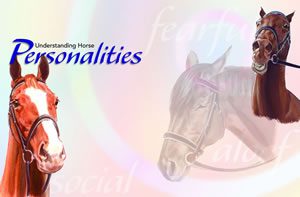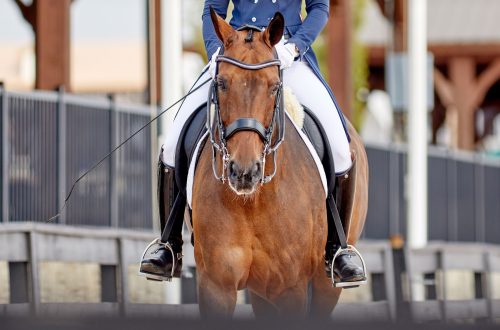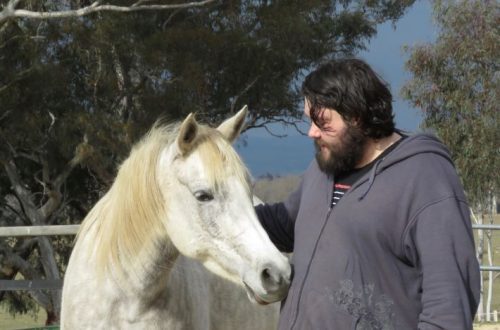
What to do with a hard hand?
What to do with a hard hand?
Rigidity of the hand can manifest itself in various forms. Some riders ride with straight elbows, which automatically enslave not only their arms, but also their neck and shoulders. Some people hold their hands too low – almost at the pommel – and this “closes” the chest and shifts the rider’s body forward. Some lean back and stretch their arms forward, trying to “reach” the reins.
Hand stiffness, no matter how outwardly manifests itself, is found in many riders and is almost their main problem … So, let’s look at where it comes from, and what we can do to soften the hands.
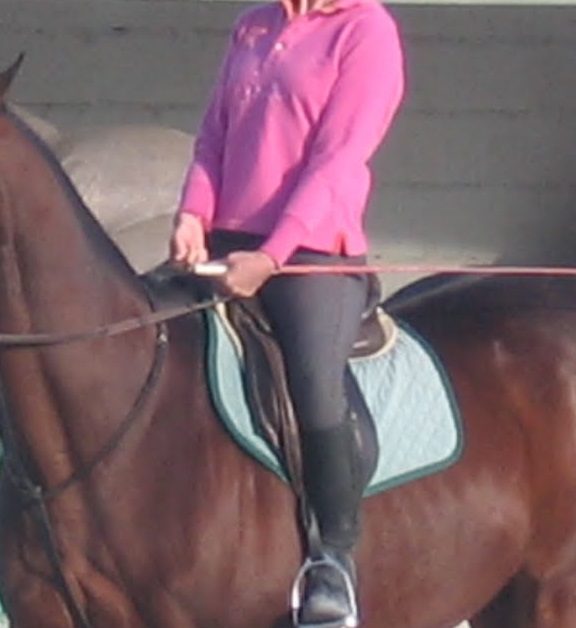
Incorrect use of body muscles to achieve balance
There is nothing that gives us more confidence than a hand that is holding on to something (even just for insurance). Imagine this: right in the middle of your living room is a wooden plank about 70 cm wide. It lies flat on the floor and runs from the door to the far wall of the room. You will be asked to walk this board in exchange for a good reward. You’ll probably find it rather ridiculous that someone thinks you can’t walk across a 70cm wide plank and start the task without even thinking.
Now imagine the same board, but lying over the abyss…

Many will likely walk the board, albeit at a slower pace and probably more carefully moving their feet. Someone is likely to stick around or just move their hands in the air over the ropes.
Now, imagine that the ropes have disappeared, and only a wooden board remains, you can only rely on your body and balance. Do the hairs on your head stand up when you take your first step?
When you ride a horse, all you have is your body control, your confidence in it, and your eyes to guide you. Tight joints make the task of achieving and maintaining balance more difficult, and this causes the rider to tighten his grip on his “ropes” at any sign of danger.
Desire to make “arms still”
Many riders’ hands become stiff because in the early stages of training, when their confidence in their own balance was still low, they tried to “calm the hands by holding them still” by following someone else’s advice or choosing to do so on their own. In attempting to continue with this task, riders feel that their bodies are moving a lot as the horse moves, but in doing so they try to intentionally “calm” their wrists, thus tensing the hand.
If you often hear a trainer ask you to “calm down” your arms, then first pay attention to whether your elbows are bent. If it doesn’t, then you’re blocking a very important motion absorption/cushioning mechanism. Bend your elbows so that they are directly in front of your thighbones, and then try to imagine that your hands should remain in front of you in a box. This box has the same width as the snaffle in the horse’s mouth, and is the same height as it is wide. It is lined with soft material, so your hands feel warm, cozy, relaxed and don’t want to leave this place. Inside, there is enough room for small movements left and right, but not much room for moving up and down.
Whenever you need to open a brush or pick it up after doing so, immediately return the brush to its “box”.
Working on clasped hands
My experience and beliefs tell me that in order to improve the rider’s handwork, you first need to increase his confidence in his own balance, center his seat in the saddle and create a sense of movement in him.
To achieve this, you can use a variety of exercises. I want to share with you my favorites:
1. Slide to the side
You will need an assistant to hold the horse or move it on the lunge.
First stop, shift your seat to one side of the saddle, as if you are clumsily about to slide off the horse. One of your legs will reach for the ground and the other will hook onto the saddle. As soon as you can’t slide any further without risking falling, place your hands on the front pommel and use your abs to push yourself back into place. First you can make a small slip, then go down. Do this 10 times on each side.
This exercise helps the rider feel the center of the saddle, encourages them to worry less about slipping, and also engages the muscles that stabilize the upper body in the center. In addition, it tires the muscles of the hands, and the hands soften.
This exercise can be performed at the walk, trot or lunge.
2. Trot (short trot)
Many riders at the training trot only feel the movement up and down and tend to try to control themselves by grabbing the horse’s flanks with the hips and legs. As a result, their hip joints become enslaved and the spine arches. All this contributes to increased discomfort and insecurity in the saddle, so the grip on the legs is further enhanced.
Trot riding (almost a walk) gives the rider a sense of three-dimensional movement of the horse’s back (up-down and left-right). He can feel how each seat bone moves in a small range independently of the other, and how the leg grip on the horse’s sides kills this small movement. I like to call this exercise “oiling” the thighs because when done correctly (without slouching, keeping the spine neutral, neck relaxed and centered in the saddle), you get a fantastic effect: the pelvis loosens up, especially when done after the exercise. with slip. The slow speed of the trot also gives the rider confidence and he releases the ropes and turns on the real source of balance – his seat and body.
3. Imagine juggling
When the rider is trotting, I ask him to imagine that he is juggling something in front of him in the rhythm of the trot. I suggest when and how to relax the elbow joint so that he can feel the movement of the horse’s back not only with the ischium and hip joint on one side, but also with the elbow on the same side. Once the rider is able to relax each elbow in this way, we proceed to mini juggling: moving the arms up and down on opposite sides 2-3 cm. The exercise teaches the rider that he can only achieve a relaxed arm through movement. Riders are often surprised when they first watch a video showing how they performed this exercise: their hands, which they definitely juggled with some effort, look motionless from the side!
4. Non-horse games and feeling exercises
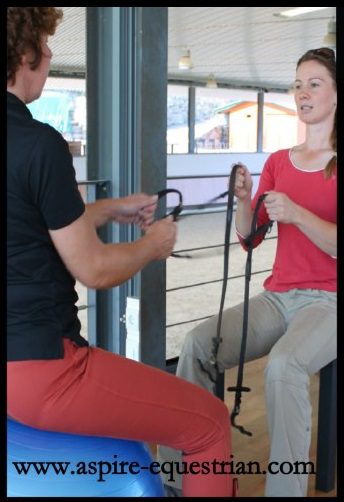
For this exercise, you will need a Pilates ball (or something unstable to sit on), a rein (or dog leash, lead, thin ropes), and someone willing to play with you!
Perhaps the simplest exercise is when the rider closes his eyes and makes contact through the reins with a helper who does not pull or release the tension. The helper then begins to move his arms in a small range in different directions, imitating the movement of the neck and head of the horse at walk, trot and canter, or in a completely random way.
The helper asks the rider to feel these movements when his elbows are straight and tight. It quickly becomes clear that this is impossible.
Then the “rider” bends the elbows and firmly fixes them on the sides – the effect is the same.
The rider can sit as he usually sits on a horse and test his feelings. If he rides with his fingers open, he can try it now to feel how the movement of the helper’s hands reaches his own hands with a delay …
Once the rider begins to understand where to loosen the arm in order to easily and quickly feel the movements of the “horse”, additional seat exercises can be used with the help of a Pilates ball. The “rider” can “ride” at a trot and check the contact again. You can practice cantering with your hips and then try to feel what is happening with your hands.
More often than not, a hard-handed rider needs to first loosen up the hips, then increase their confidence in their upper body position, and then make their landing more secure.
5. Lightweight canter
This is one of my favorite exercises that I recommend for both beginners and more advanced riders. It really improves the flexibility of the rider’s joints, the sense of rhythm, improves the quality of the canter and makes any rider more agile. It is impossible to do a good balanced canter if you have tight knees and hips. Once you loosen up there, your hands will loosen up next.
Summing up
Rigid hands have their origin in the rigidity lurking somewhere in the “main” body. If you are training a rider, don’t try to fix his hands, look with your “eagle coaching eye” for tight spots, such as the seat, landing errors (the rider “sits like in a chair”) or general nervousness.
Constantly asking a rider with stiff hands to relax them is like asking him to confidently walk across a precipice on a wooden plank without holding on to the ropes. First, balance. Then flexibility.
It’s the same with the horse. Without a basic balance, flexibility will never improve.
Viola Grabovska (source); translation by Valeria Smirnova.



